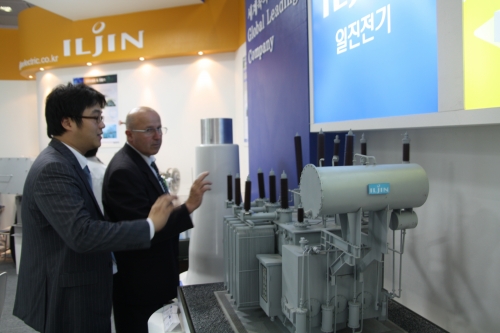
Fiber optics and electic power lines are common sights in our modern world, and in fact they are almost indistinguishable. But they don't usually interact with each other - after all light is light and electricity is electricity, and how can they affect each other Well, Iljin is showing the answer to exactly that question at Global Electric Power Tech 2009. It is truely orginal innovations like these which drive the state of the art higher and higher.
The company's engineers definitely paid attention in physics class. They have developed systems using obscure effects recorded over 100 years ago on the interaction of polarized light and electrical current when they are both applied to crystal structures. Iljin's optical current transformer users the Faraday Effect, which is that when linearly polarized light travels through flint glass that is exposed to a magnetic field, its plane of polarization rotates. By measuring the rotation of the polarized light, the optical current transformer can measure the magnetic field intensity of the current, and therefore the current itself.

Iljin uses light to measure electricity, which results in a completely superior product. It is faster, smaller, safer, and immune to electromagnetic interference. It has a wider range and bandwidth and extended dynamic range, which means that there is less of a potential for error. In short, it just works, and it just works better.


